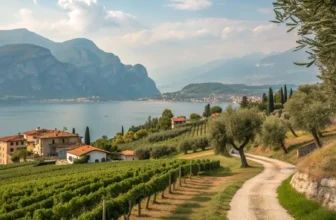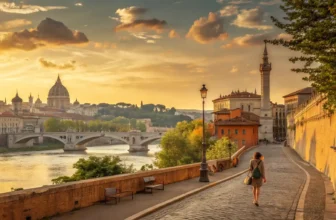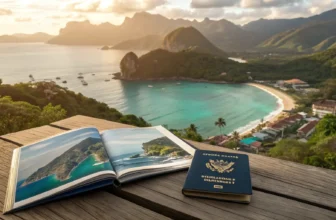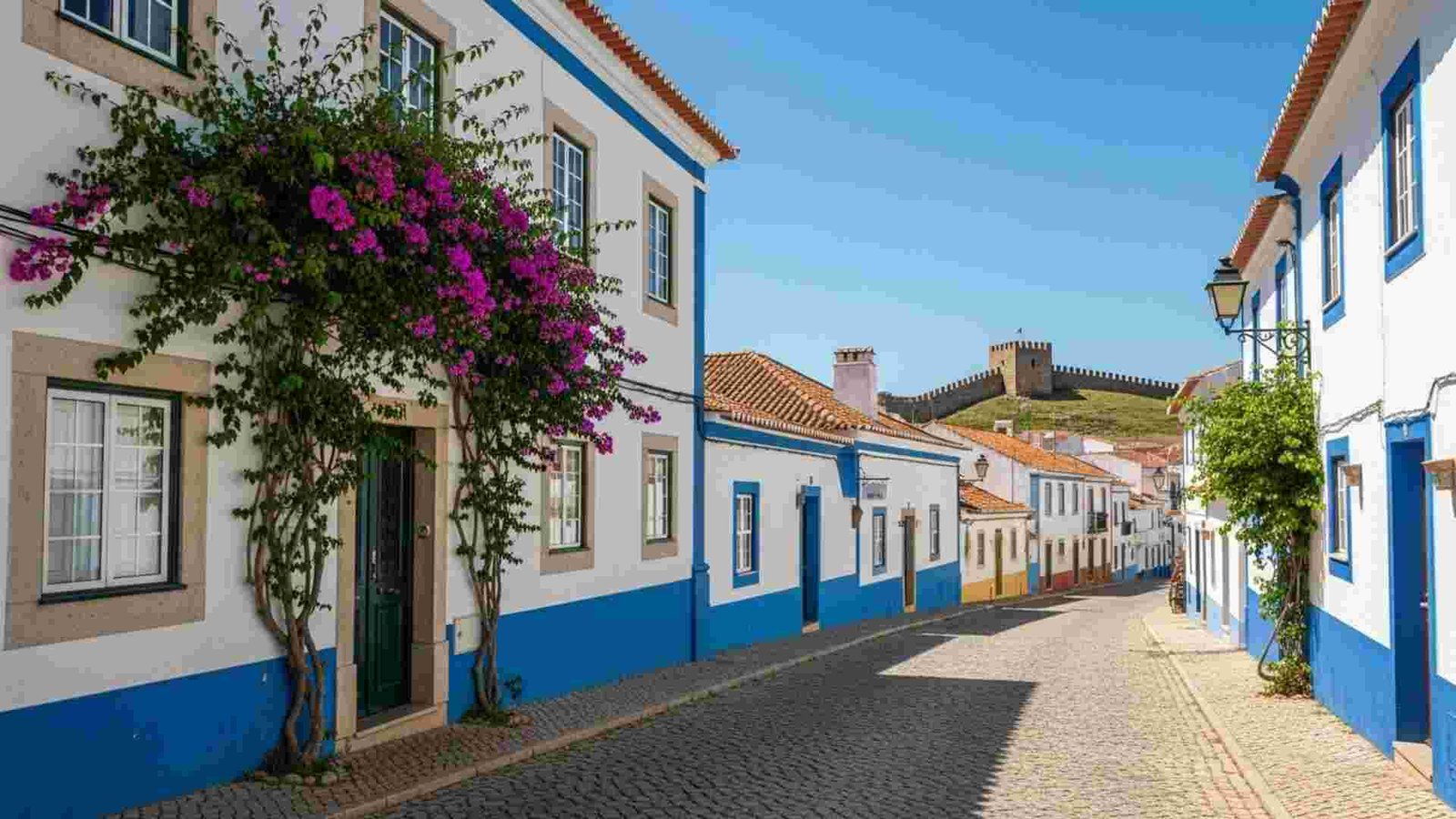

Salt on your lips, sun flickering off quiet harbors, and a hush you didn’t expect from Europe’s coast. We’re chasing wonder without the crowds, trading overrun hotspots for places that feel newly discovered. With flight prices shifting and summers growing hotter, the smartest travelers are seeking shade, value, and room to breathe.
This guide maps twelve radiant stand-ins—pocket-size towns, cliff-ringed bays, lakelight retreats—where culture runs deep and evenings still belong to locals. Pack curiosity. Leave assumptions. Ahead are detours that change how you vacation: slower plates, softer light, truer stories. Stay with me; the next pages show where to start.
1. Kotor, Montenegro
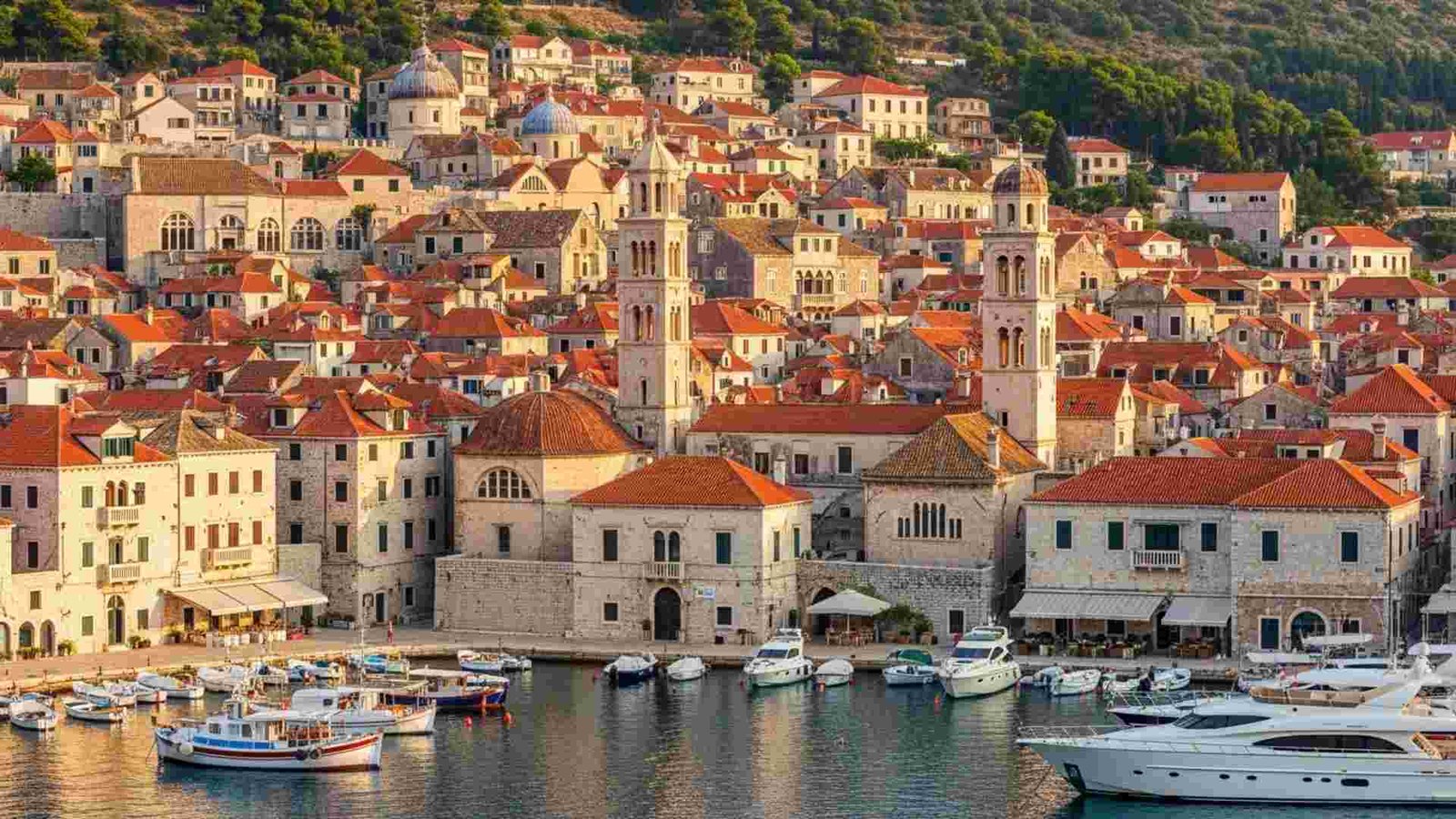
This town, tucked into the dramatic fjord-style curves of the Bay of Kotor (Boka Kotorska), sits under steep mountains and beside shimmering water, so instantly you feel the “wow” factor. The old town is a UNESCO World Heritage site, with medieval walls that stretch about 4.5 km and reach up to 20 metres in height in places. You’ll wander stone-lanes, spot stray cats (yes, Kotor is known for them) and glint at Venetian-era architecture. It’s compact so you can explore it easily in a few hours.
it blends nature and heritage in a way that surprises. For instance, you can hike from the old town up to the St. John’s Fortress above and look back down at the bay twisting like a river in a mountain gorge. And the bay itself: ancient river valleys flooded by sea, forming dramatic inlets that are a visual treat.
Practical Information:
- Peak / off-peak seasons: Summer (June–August) floods with cruise ships and day-visitors. If you go in spring or late September you’ll find less crowds and gentler weather. Note: Montenegro’s tourism organs are warning of infrastructure stress in 2025.
- How to reach & explore: Fly into Tivat Airport (TIV) or Podgorica Airport (about 1-.5 h drive). From Kotor old town you’ll walk virtually everywhere in the centre; for the fortress climb you’ll want good shoes.
- Ideal visit duration: 1.5 to 3 days is enough to soak in the old town, hike the fortress, maybe take a boat trip around the bay.
- Must-try experiences: Wander the old town before 9 a.m. when it’s still quiet. Climb the fortress for sunrise or before the heat hits. Take a boat ride around the bay to places like Perast.
- Budget considerations: Montenegro is still more budget-friendly than many Western Mediterranean spots. But in Kotor some prices (especially for the climb or drinks in peak season) have jumped.
- Cultural etiquette: Dress modestly in churches. Be mindful that the old town is residential — noise late at night isn’t appreciated.
- Photography spots: From the fortress you get sweeping bays; in the old town the maze-like alleys cast perfect golden-hour light; on the boat ride the water and cliffs create mirror reflections early morning.
2. Rovinj, Croatia
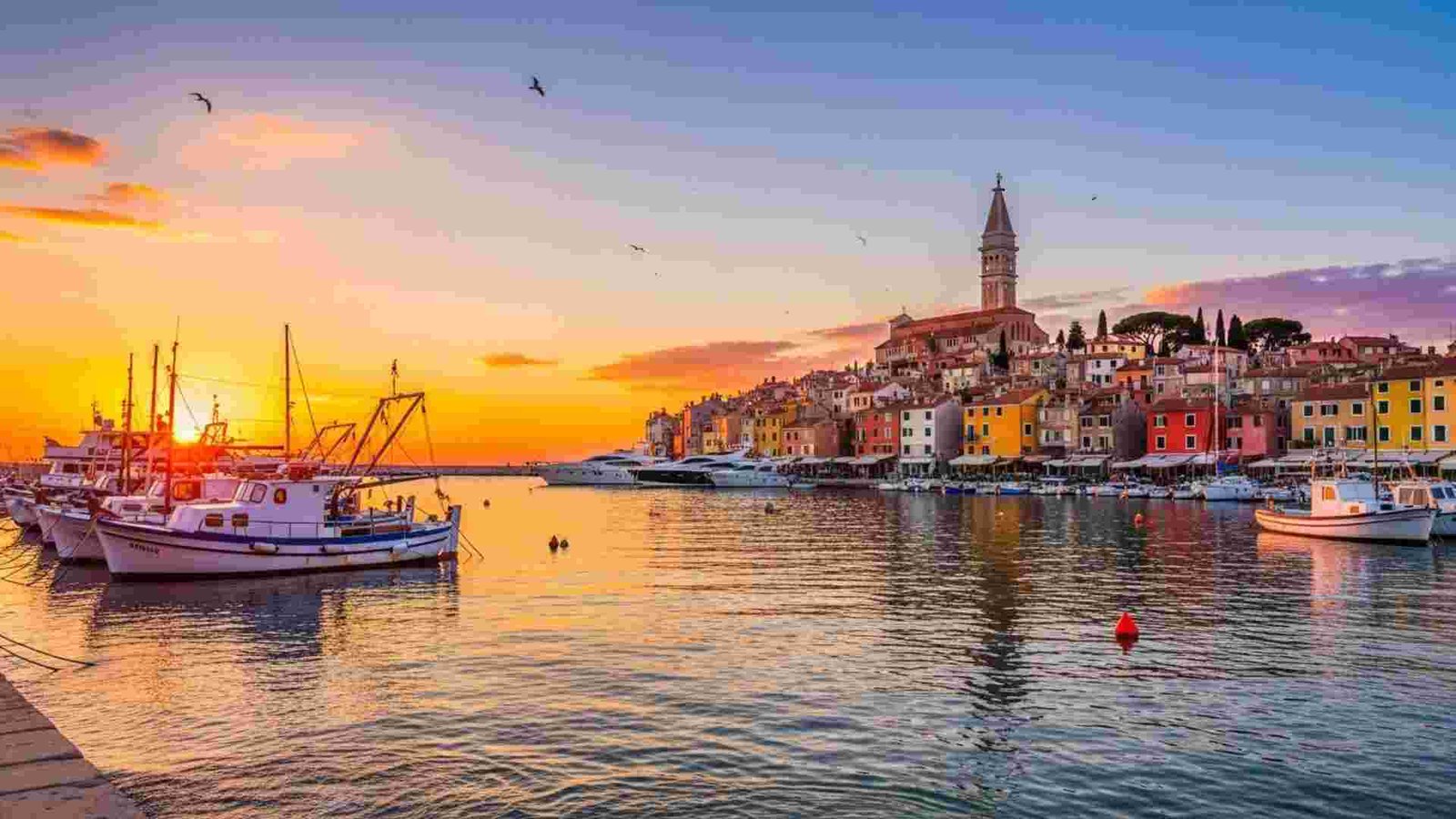
Next up, Rovinj on Croatia’s Istrian peninsula. It’s got that Italian-Adriatic vibe but without the massive crowds. The town recorded 735,556 arrivals and 4,210,577 overnight stays during 2024. It’s characterised by narrow cobbled streets, colourful seaside houses, the church tower of St Euphemia rising above it all, and a harbour that glows at sunset.
culture, sea, and relaxed pace. The old town spills from the harbour, walking you through medieval lanes, then you find yourself at seaside cafés, or on rental boats exploring nearby islets. In 2025 it was nominated for the prestigious British magazine travel award as “most desirable city in Europe”. For your readers: it’s a destination that feels genuine, not overly polished, but still comfortable and accessible.
Practical Information:
- Peak/off-peak: Summer sees the highest heat and crowds; spring or early autumn offers milder temperatures and fewer people.
- Access & exploration: Nearest major airport is Pula Airport. You can drive or take bus from there. The old town is best explored on foot; park your car outside. Consider taking a boat ride to nearby islands.
- Visit duration: A full day gives you the town and coastline; two days let you add a boat/island excursion or some truffle-and-wine side trip (Istria is famously truffle land).
- Must-do experiences: Climb the tower of St Euphemia for views, walk the peninsula at sunset, rent a small boat for the archipelago.
- Budget: Croatia’s tourism prices are rising in 2025, but compared to top Western European spots it’s still reasonable.
- Cultural etiquette: Appreciate the blend of Croatian/Italian heritage; basic Italian greetings go a long way.
- Photo opportunities: Harbour at golden hour, old town rooftops and tower, reflections in calm evening waters.
3. Piran, Slovenia
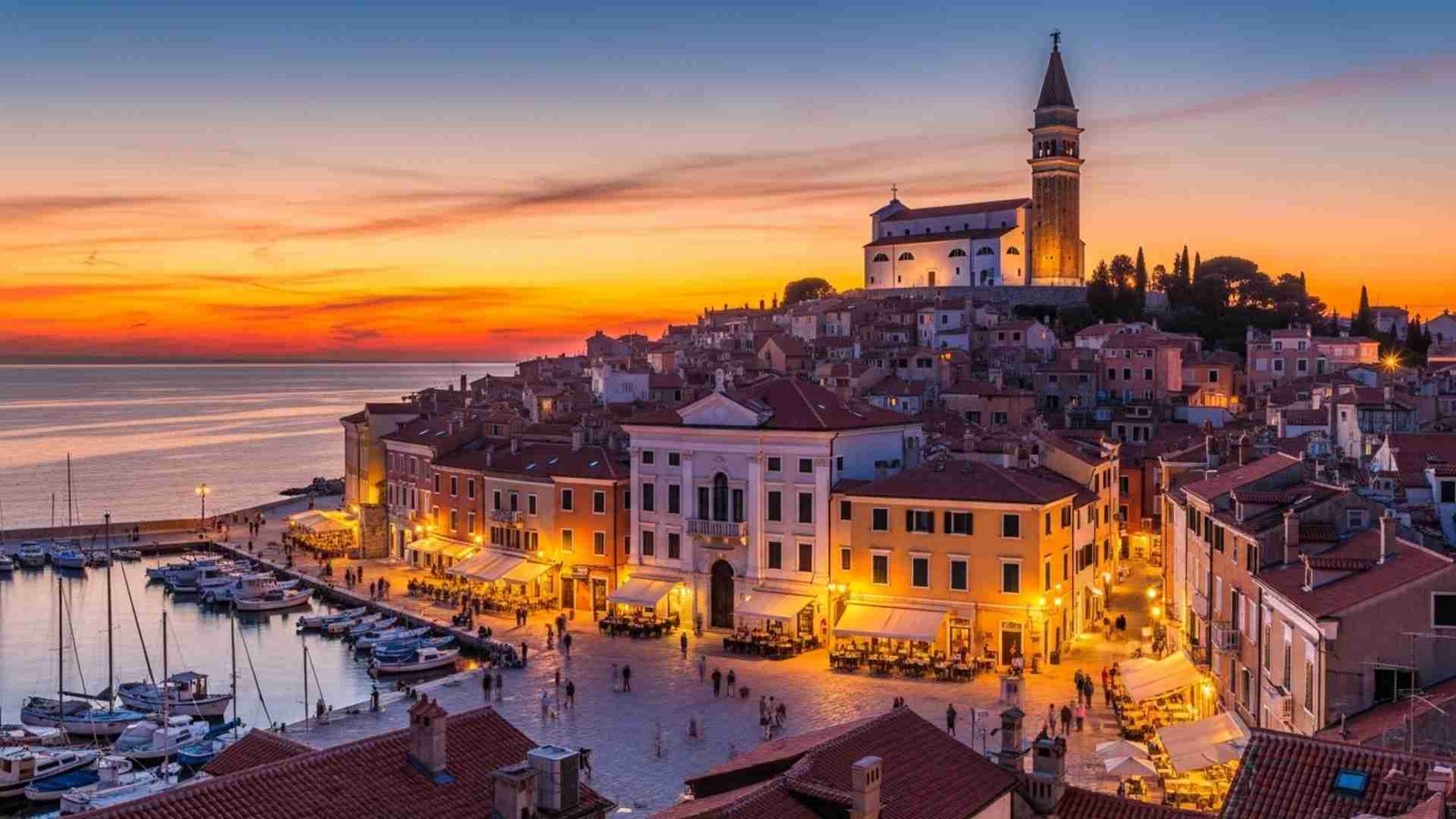
Piran, on Slovenia’s short but beautiful coastline. With a population of just about 3,733 in 2019,this small town feels intimate. It’s perched on a peninsula jutting into the Adriatic, with Venetian-influenced architecture, narrow lanes, pastel facades and a rich maritime heritage.
the old port town layout means wherever you are you’re never far from the sea. The cultural layering is interesting: Slovenian and Italian languages and traditions overlap. For your readers: it offers that “Mediterranean seaside escape” feel without the heavy traffic of big resort towns. Visitor guides for 2025 call it a must-visit for its authenticity.
Practical Information:
- Peak / off-peak: Summer is nice but you’ll avoid the major crowds by visiting in May or September. Winters are much quieter, though services may be reduced.
- Getting there & around: Fly into Ljubljana Airport (then about 1.5 h drive) or fly into Trieste in Italy and drive via coast. Once in Piran, old town is best on foot.
- Duration of stay: One night is sufficient, but two nights let you slow down, wander the salt-pan trails nearby and really soak the coastal vibe.
- Must-try experiences: Walk up the town walls / ramparts for panoramic views, explore the salt pans (Sečovlje Salt Pans) just outside, enjoy seafood in sea-view restaurants.
- Budget considerations: Slovenia is generally mid-range in cost — more expensive than some Balkan spots but less than high-end Mediterranean resorts.
- Cultural tips: Bilingual context (Italian, Slovene) means being polite in Italian or Slovene is appreciated. In the old town, narrow lanes mean limited car traffic — respect pedestrian space.
- Photography: Best at dawn when the light is soft on the pastel houses and the harbour is calm; the walls and sea combine at sunset for dramatic shots.
4. Cefalù, Sicily, Italy
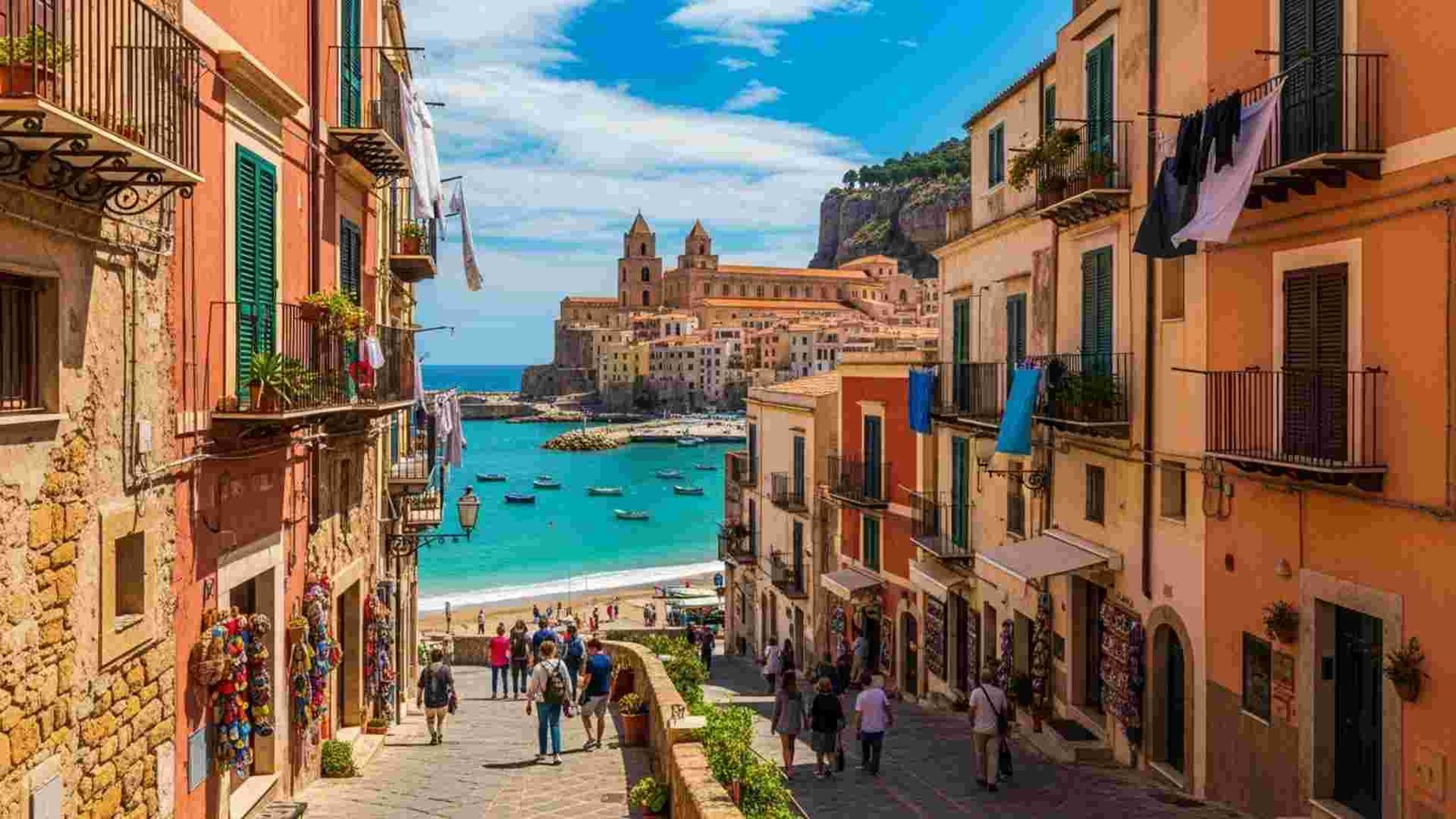
Cefalù, along Sicily’s northern coast. Built at the foot of a 376-metre promontory that plunges into the Tyrrhenian Sea. The town blends beach-resort ease with rich history: Norman cathedral, medieval lanes, a relaxed vibe. According to a 2025 guide it’s the perfect combo of beach, history and food.
If they’re looking for a Greek-islands look-and-feel but want something a little different, Cefalù delivers. It often flies under the radar of Italy’s mass tourist hotspots, so you’ll get that balance of charm without the throngs (depending on when you go). Because it’s in Sicily, expect the warmth, the Mediterranean light, the flavour. One article calls springtime there “old-school glamour”.
Practical Information:
- Best seasons: Late spring (May) and early autumn (September) offer warm beach days without absolute peak crowds. High summer will be busy.
- How to get around: Fly to Palermo or take train from there (Cefalù is around 70 km east of Palermo) and then stroll the compact old town. For full comfort, pick accommodation near the beach and old town combined.
- Ideal stay duration: Two nights is great—you’ll get a beach day + old town exploration + perhaps an excursion into the hills or nearby natural park.
- Must-do: Walk the lungomare (seafront) early morning for calm water reflections; explore the Norman cathedral with its mosaics; climb the Rocca (rock) behind town for panoramic views and let the day fade over the sea.
- Budgeting: Sicily is more affordable than many mainland Italian hotspots; though beachfront and high-season prices climb.
- Cultural tips: Dinner typically starts later (8 pm+). Beachwear is fine on the sand but dress more modestly when visiting churches.
- Photography: The promontory and sea combine in golden light; narrow alleys with colorful doors and stone walls give editing-friendly texture; reflections at dawn in the calm harbor are magic.
5. Hvar Island, Croatia
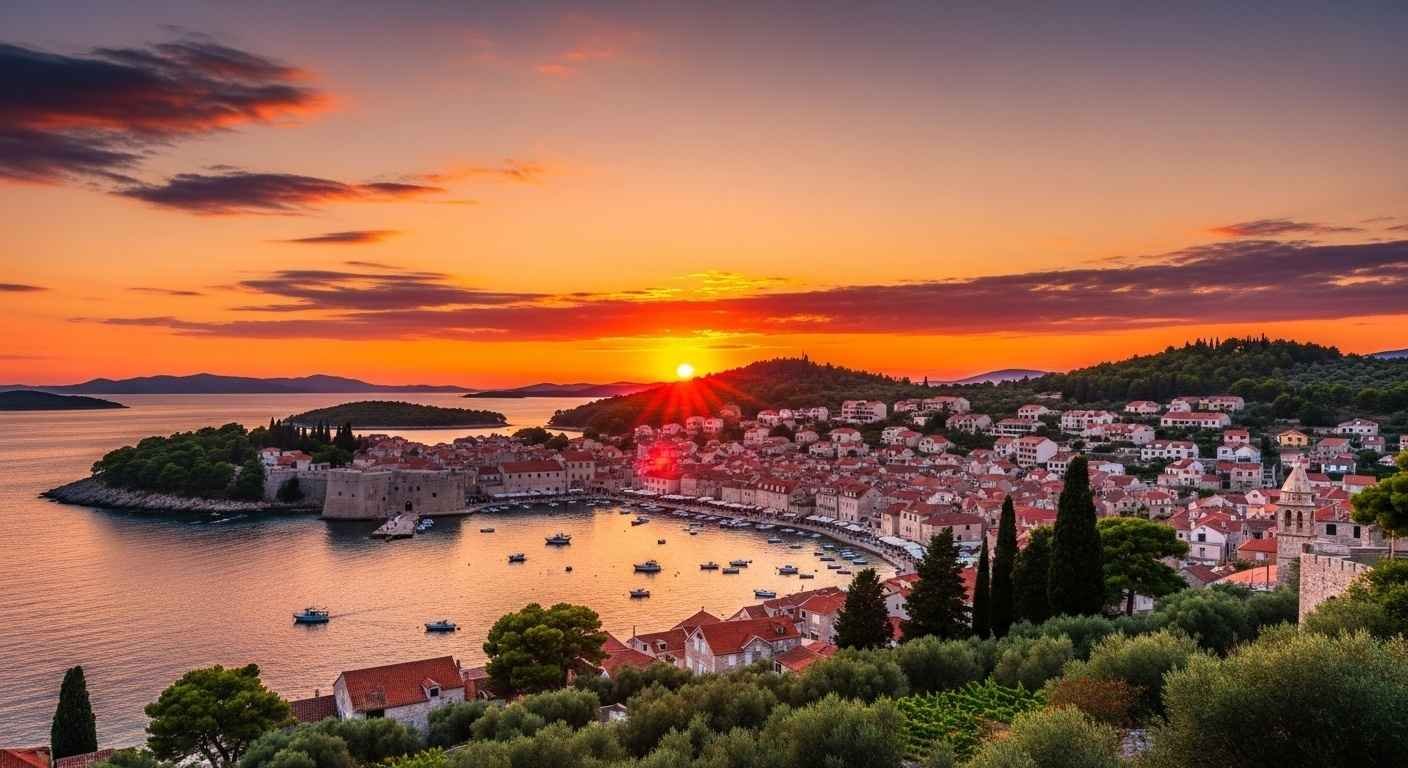
Hvar Island (specifically Hvar Town) in Croatia. This island is about 68 km long and covers roughly 297 km². It’s known for being one of the “sunniest spots in Europe” with around 2,700+ sunshine hours per year. The town itself is full of energy: harbour fringed by cafés and yachts, stone buildings, and that blend of leisure and history. The island also has vineyards, lavender fields and olive groves tucked away inland.
If someone tells you “Greek islands,” you might think party-y, posh, beaches, maybe expensive. Hvar gives you much of that but in a different national setting (Croatia) and often with better value or fewer crowds (though popularity is rising). For 2025 the guide notes it as an island paradise with “authentic magic”. One caveat for your readers: it’s more upscale than some quieter destinations, and the party scene is real—but you can slow down and enjoy nature too.
Practical Information:
- Seasonality: Peak summer (July/August) gets busy, especially in Hvar Town. Shoulder seasons (May, September) give good weather but fewer crowds.
- Access & exploring: Reachable by ferry from Split (approx 1.5-2 h) or catamaran. Once on the island, Hvar Town is walkable; to explore inland/wine regions you’ll need a car or scooter.
- Time to stay: One full day gives you a feel for the town + harbour; two or three days let you branch out: vineyards, beaches, maybe boat to Pakleni Islands.
- Experiences to highlight: Sunset drink in Hvar harbour, winery visit (island produces some excellent wines), beach or boat day out around Pakleni or secluded coves, explore the fortress above Hvar Town for views.
- Budgeting: Tends toward mid-upper range compared to some Croatian spots. Boat tours, lunches by the harbour, yacht views all add up.
- Cultural notes: Hvar has a luxe side—but also quiet villages inland. Encourage visitors to balance both.
- Photo ops: Yachts in the harbour with fortress above, lavender fields (if visiting mid-summer) inland, sunset silhouettes from fortress looking over rooftops into sea.
6. Korčula (Croatia)
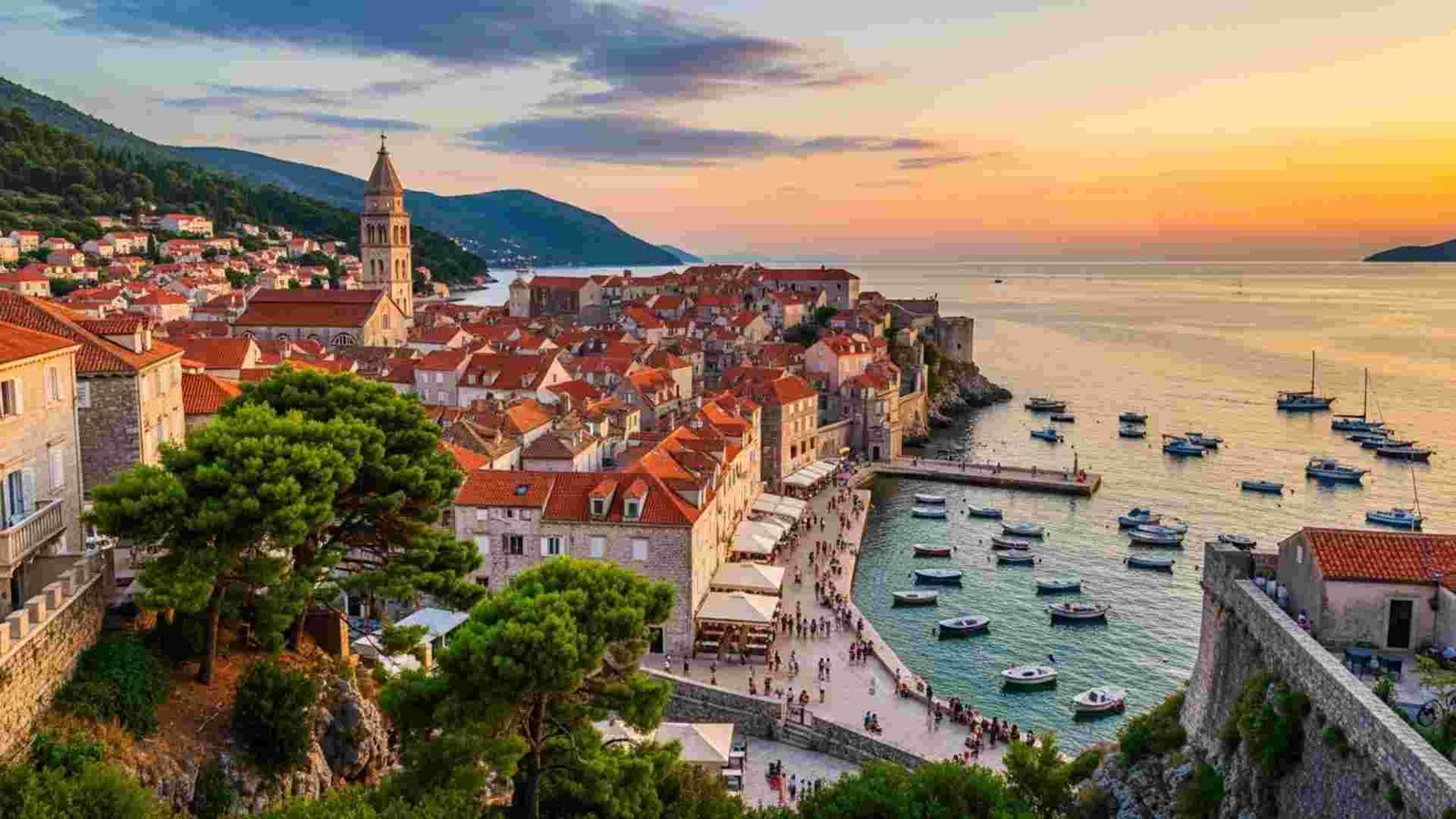
Think of Korčula not just as a pretty island—but as a living postcard of Adriatic life with depth. You’ll find ancient caves, historic ship-building traditions, vineyards and winds that mould the mood. For example: the famous cave Vela Spila on Korčula holds human fossils over 25,000 years old.
you arrive by ferry from the mainland. In the old town you stroll narrow lanes, stone walls reflecting 500+ years of Venetian rule. Later you sip a glass of the island’s only-in-the-world white wine called Grk (a limited production) while watching the wind whip the channel between Korčula and Pelješac. The combination of deep history + active maritime life gives the place its special flavour.
Practical Information:
- It has an area of roughly 276 km² and population around 15,522 (in 2011) for the full island.
- Summer averages: about 2,700 hours of sunshine annually and average summer temps ~26.9 °C.
- Getting there: Ferries from Split or Dubrovnik; once on-island you’ll want a bike or scooter to explore vineyards inland.
- Best for 2–3 nights so you see the old town, a beach/sunset, and do a vineyard or small-island side trip.
- Tip: Don’t just stay by the harbour — wander inland to villages where olive groves and local wineries still run in traditional style.
7. Alentejo Coast (Portugal)
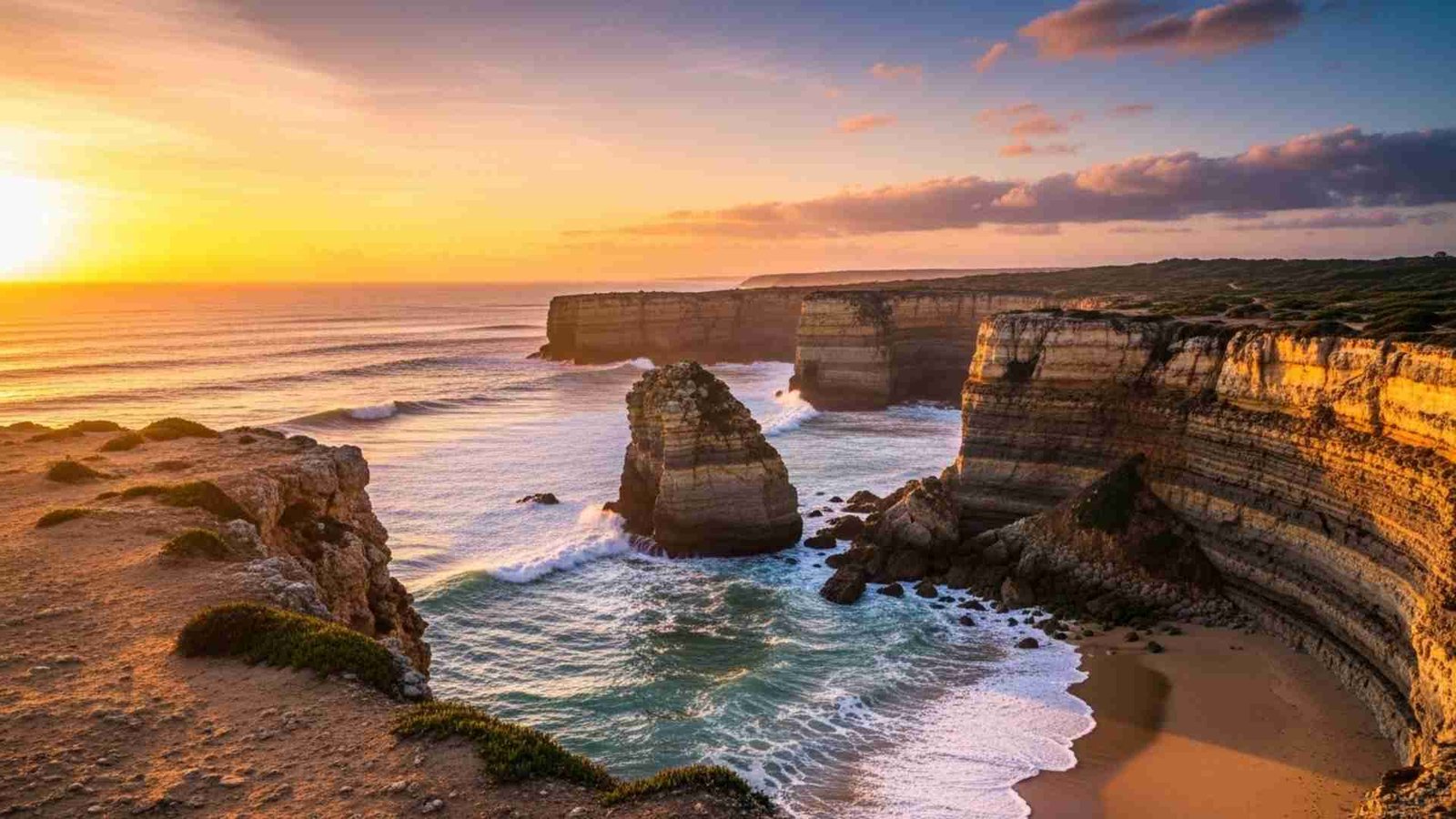
wide open coastline, cork forests, Atlantic surf, low-density traveller footprint. What makes it special: you’re not just sunbathing—you’re riding Atlantic waves, exploring megaliths, tasting wines in stone cellars, and watching cork being harvested. In 2024 the region logged over 3.2 million overnight stays, a first for the zone.
you arrive by car from Lisbon (about 1.5–2 hours). You drive past golden plains, then suddenly you’re on the Atlantic shore at sunset, wind blowing and the surf rolling in. You stay in a restored farmhouse-hotel, then head to dinner where sea bass grilled with local olive oil and a glass of Alentejo red set the tone.
Practical Information:
- Best seasons: May–June or September for warm weather, lighter crowds. High surf season is winter but that’s for serious surfers.
- Access: Nearest major airport Lisbon (LIS). Hire car recommended to explore coast and interior.
- Stay duration: 3–4 nights gives you coast + inland villages + wine route.
- Budget: Generally more affordable than Algarve, especially outside beach resorts.
- Local etiquette: English is widely spoken; but learning a few Portuguese phrases shows respect. Try local dish “açorda-alentejana” (bread & garlic soup) or “porco à alentejana”.
- Unique photo ops: Cork-harvesting scenes, dramatic Atlantic cliffs, horizon-wide emptiness at dawn.
8. Ksamil (Albania)
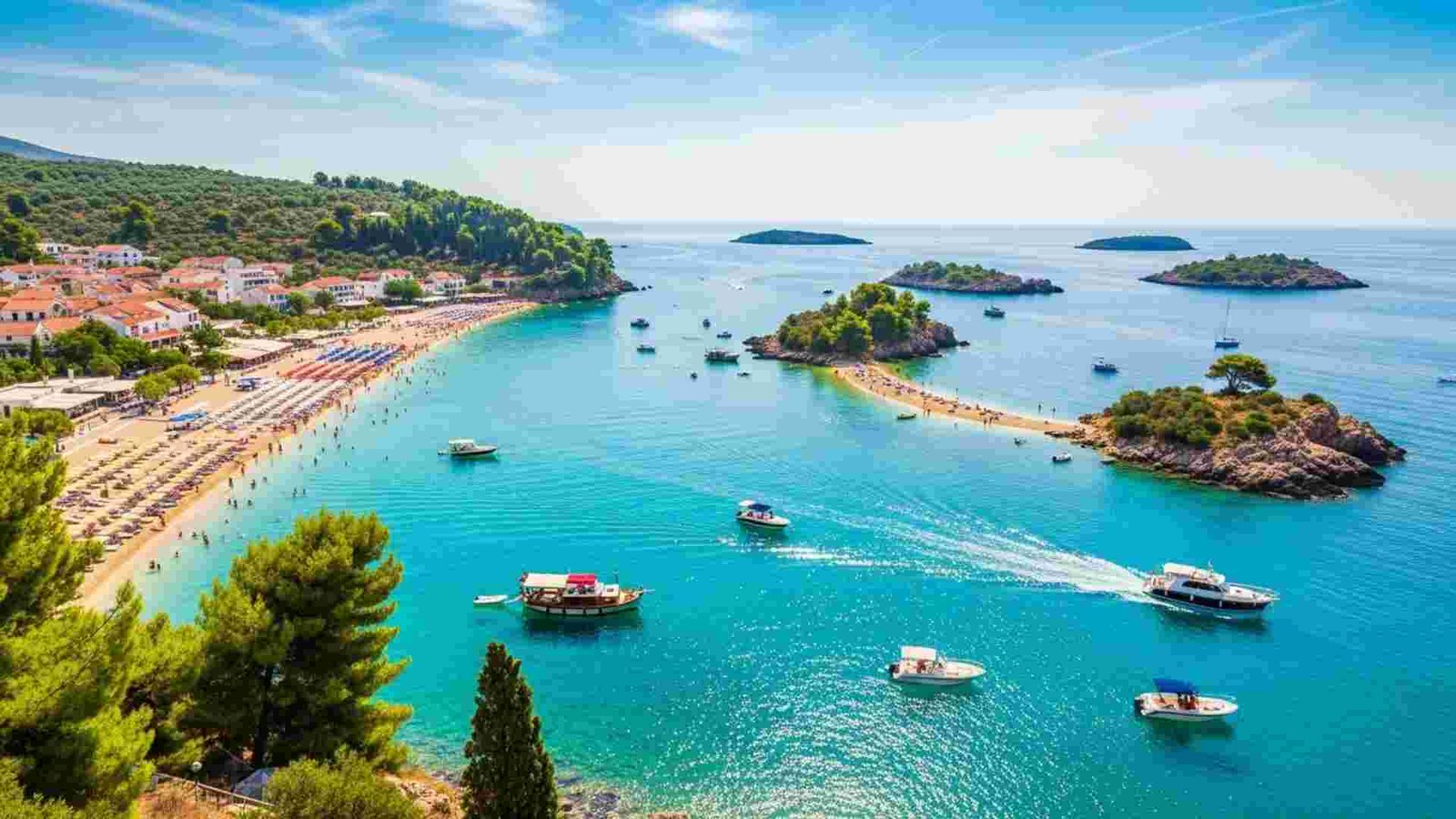
This one feels like stumbling on a Greek-island look-alike and realising you’re somewhere fresh. Ksamil lies on the Albanian Riviera, with small islands offshore and turquoise water. But here’s the twist: it’s compact, still a little rough around the edges, and the beaches can get packed. For example: it’s only about 12 km south of Sarandë.
you take a short boat out to one of the tiny Ksamil islands, snorkel above sunken ships (yes, wreck diving is a thing here) and return to shore for a seaside taverna where the fish is fresh and the prices still feel OK. Then you stroll past kiosks, locals working fast, the vibe is real. The contrast of near-Greece glamour and plain-spoken Albanian seaside makes it memorable.
Practical Information:
- Arrival: The nearest airport is Tirana (~4 hours drive) or fly into Corfu (Greece), ferry across then short drive.
- Stay length: 2 nights is fine, more if you want relaxed pace and hidden coves.
- Budget: More affordable than many Mediterranean beach spots — check local guesthouses.
- Heads-up: In peak summer some beaches get crowded and infrastructure is still catching up.
- Etiquette: Respect locals — some parts may feel more spontaneous than polished resorts.
- Unique angle: For travellers who like active + chill: snorkelling above wrecks, kayaks between islands, sea meets rawness.
9. Lake Ohrid (North Macedonia)
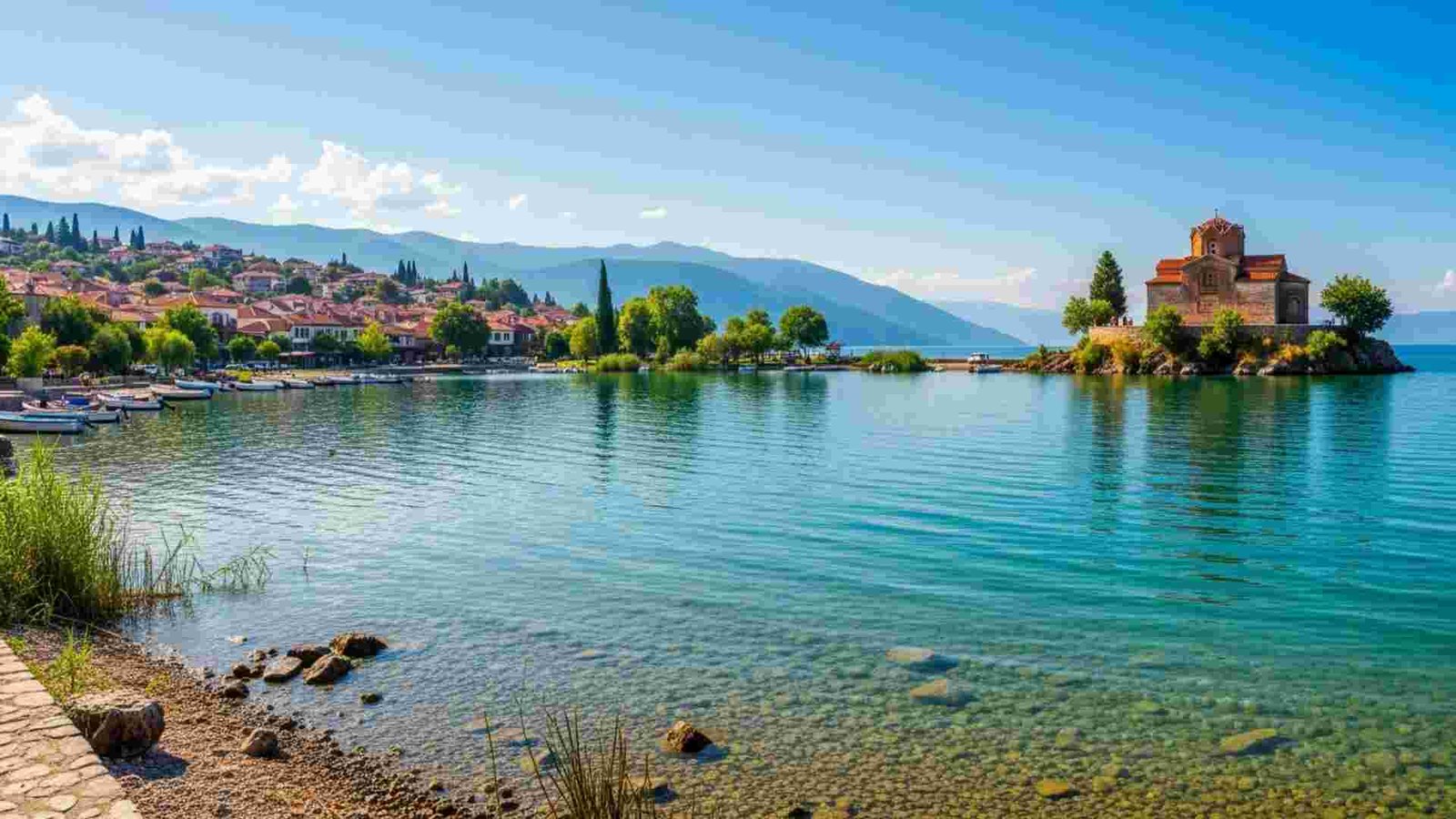
Here’s one where the “sea-escape feeling” comes via freshwater—one of Europe’s oldest and deepest lakes, rich in history. It’s not just scenic—its cultural layering is impressive: Orthodox monasteries, Ottoman architecture, and nature in one. According to trade data, the Lake Ohrid region accounts for about 80 % of North Macedonia’s tourist revenue.
You stay in the town of Ohrid, wander cobbled lanes at dusk, then take a boat across the still water as the sun sinks behind mountains. Next day you explore a 10th-century church perched above the lake, then dip into the water in a hidden cove. It’s less “beach resort” and more “lake-side heritage and nature combo”.
Practical Information:
- Peak season: July–August for warm lake swimming; May/September for quieter visits.
- Access: Fly into Skopje or Ohrid airports; drive from Skopje ~3 hours.
- Stay duration: 2–3 nights gives you town, lake boat trip, a monastery/hike.
- Budget: Typically more affordable than Mediterranean coastal resorts.
- Cultural tip: In religious sites dress modestly; early evening strolls are magical.
- Caution: While a gem, UNESCO has flagged environmental pressure at the lake.
- Unique photo ops: Dawn mist over the water, reflection of ancient church tower, lake-edge cafés with mountain backdrop.
10. Vis Island (Croatia)
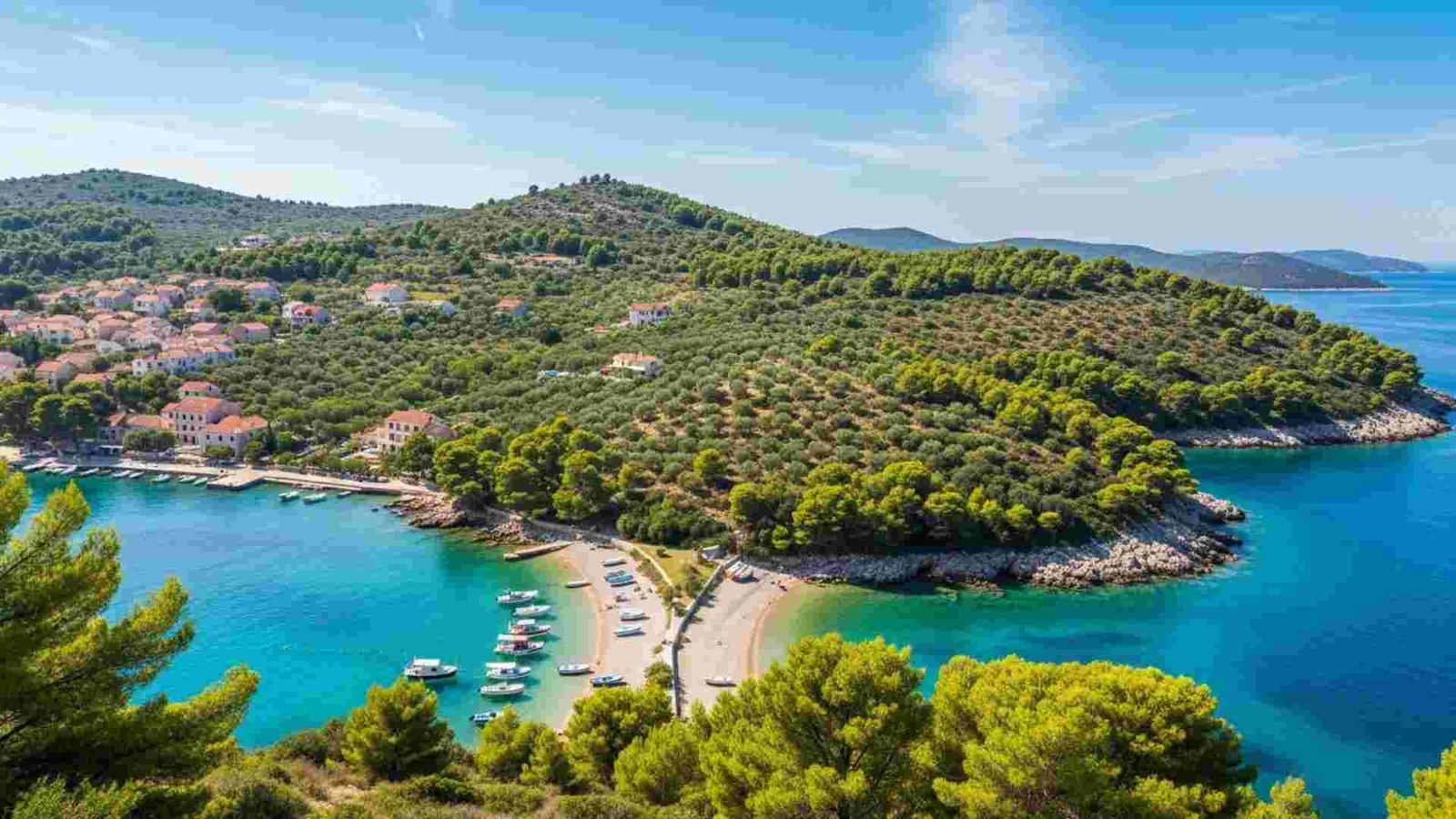
Vis is the smart pick for those who say “I want Greek-island style, but quieter, less obvious.” This island was closed off for decades (a military base till 1991) so it has that “discovered slower” feel. It covers about 90 km² and had a population of ~3,313 in 2021.
you arrive by ferry from Split (about 1.5 h by catamaran). You wander along the harbour of Vis town, past fishing boats, then take a small boat out to secluded coves like Stiniva. In the evening you sample island wine from vineyards that cover ~20 % of arable land. Vine species like Vugava, Plavac Mali and Kurteloška flourish.
Practical Information:
- Getting there: Ferries and catamaran from Split; no airport, which keeps the feel calmer.
- Stay length: 2–4 nights gives you the main town, hidden beaches, inland hikes or wine tours.
- Best time: May–June or early September for best mix of weather + fewer people.
- Budget: Can lean upscale in places, but overall more relaxed than major Croatian islands.
- Unique edge: The island’s past means fewer crowds, more authenticity. Best when you want beach + quiet + local life.
- Photo moments: Marine-blue bays, vineyards on slopes, old military tunnels turned “secret” strolls, sunset over the Adriatic from hilltop.
11. Syros (Greece)
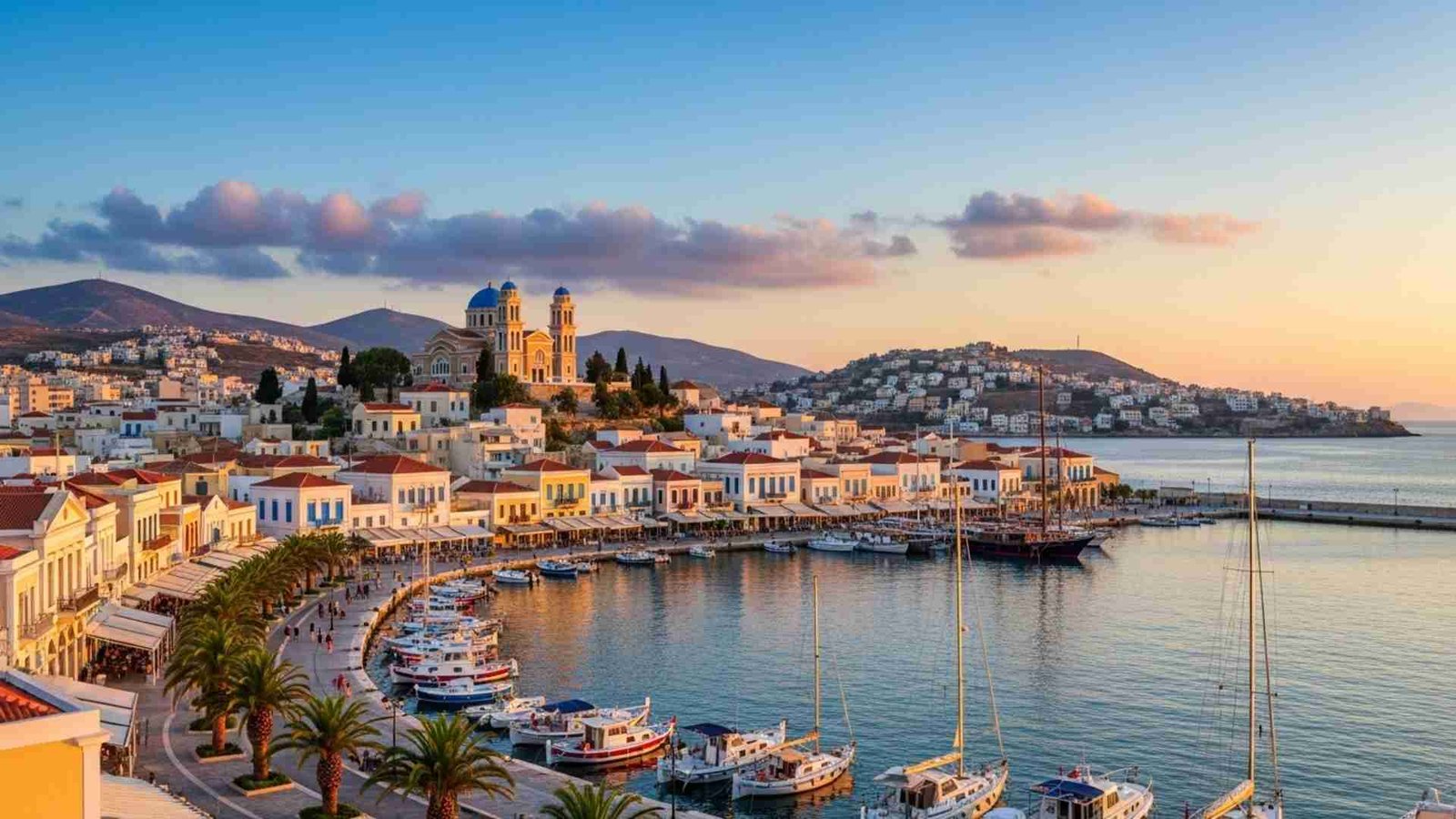
Syros isn’t just “another Cycladic island”—it’s the Cyclades’ capital, layered with history, architecture, local life and surprises. One of the most unexpected discoveries: in the heart of the main town Ermoupoli you’ll find neo-classical mansions, elegant architecture and a harbour bustling with real maritime business—not just tourist shops.
you arrive by ferry from Athens in the evening. Waves slap the quay, lights reflect in the water, voices echo in the square. You don’t head to the beach first. Instead you stroll the marble-paved streets of Ermoupoli, grab a coffee at the café inside the Town Hall (yes, you read that right—there’s a café inside) and absorb the feeling of a living town, not just a resort.
Practical Information:
- Best time: Visit May–June or September for warm sea, fewer crowds.
- Getting there: Ferries run from Athens (Piraeus) and other Cyclades islands. Note: the island has a working port and resident population (~21,124 as of 2021) so it stays active even outside peak tourism.
- Hidden gem tip: Rent a small boat or join a local excursion to the north-west coast to remote beaches like Varvarousa, Lia or Grammata—less visited, more raw.
- Local experience: Head to the waterfront early evening, pick a seaside taverna specialising in island-wine and local dishes like marathopita (fennel-pie) and lahanodolma (stuffed cabbage). Capture the theme: culture + sea + authenticity.
- Broader travel theme: Syros exemplifies “slow reveal” travel. You think you’re going for the beach, but you discover layers of architecture, local industry, everyday Greek island life. It reminds you that great destinations aren’t always fully revealed in advance—they reward time and curiosity.
12. Collioure (France)
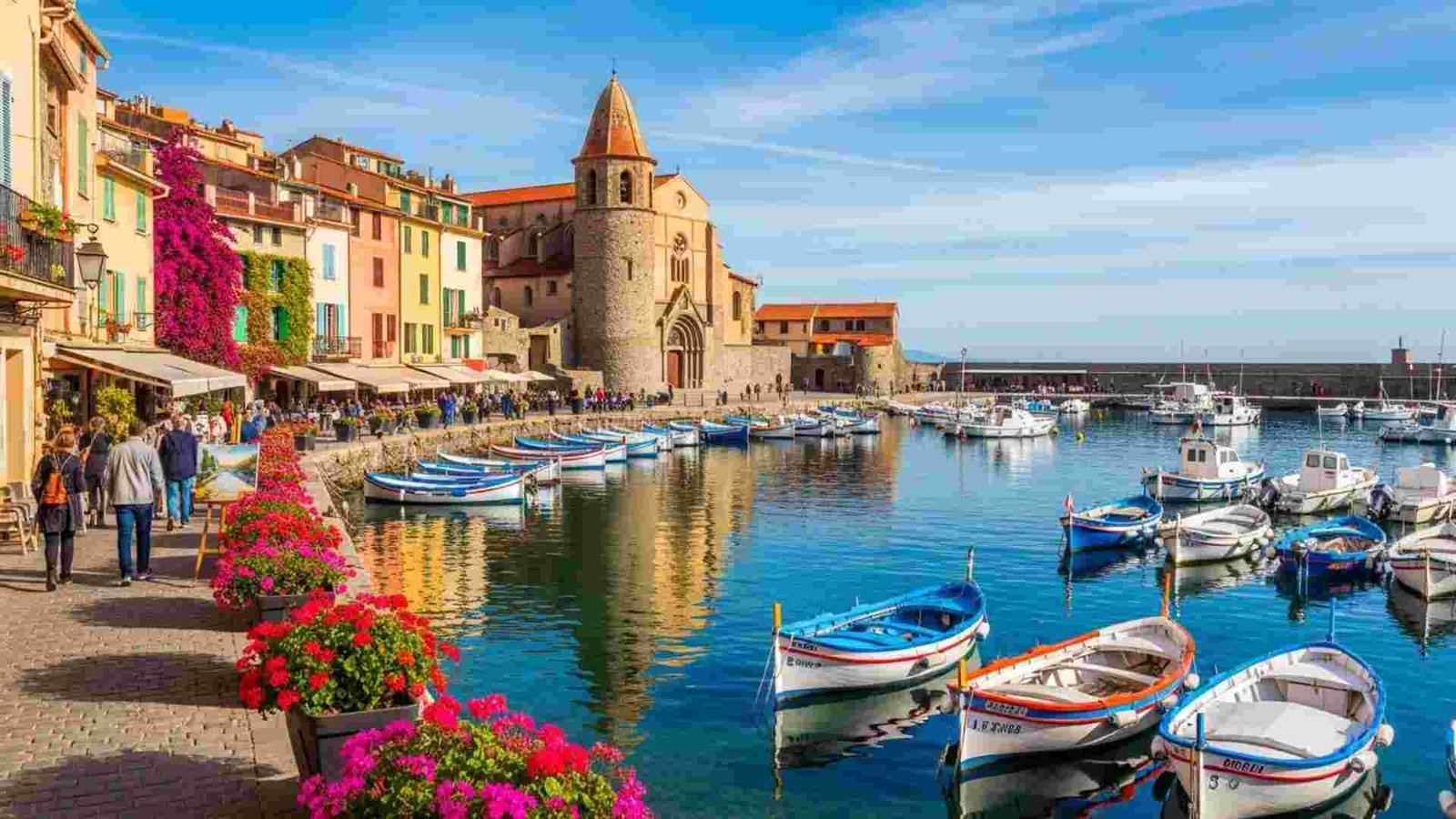
Collioure, on France’s Côte Vermeille, where mountains meet the Mediterranean in a brilliant collision of sea-light, culture and quiet energy. But here’s the unexpected: the town was a beacon for the Fauvist painters in the early 20th century.
You arrive by train from Barcelona or Perpignan. Alight, stroll past Catalan-style fishing boats bobbing in the harbour, then wander into lanes of coloured houses where shutters are painted in the same tones the artists used a century ago. At dusk you pick a café outdoors, sip a rosé from the local vineyard, and watch light paint the old church tower gold.
Pracctical Information:
- Best time to go:Late spring (May) or early autumn (September) give warm weather, fewer crowds. Summers are lovely but can be quite busy. Winter is mild (thanks to Mediterranean climate) and the light is still great.
- How to reach & move around:Collioure is in the department of Pyrénées-Orientales, southern France. Nearest major city: Perpignan (about 25 minutes by train or 30 minutes by car) from Collioure.
- Recommended stay:1–2 nights works if you’re passing through; 3 nights gives you time to soak the art, beach, wine and the local vibe without rushing.
- Budget & cost tips:Collioure leans more boutique than budget seaside resort, especially near the harbour. But avoiding peak season helps. Dining inland or a little off the main drag gives better value.
Conclusion:
Swap the ferry queues for places where color, culture, and calm still share the same postcard. These European “dupes” deliver the sun-salt glow you crave, plus deeper stories—art towns, lake sanctuaries, wine-terraced coasts—without the crush. Plan for shoulder seasons, linger a night longer, and spend where it matters: local boats, family kitchens, small museums. You’ll come home with lighter crowds in your photos and heavier meaning in your memories.

